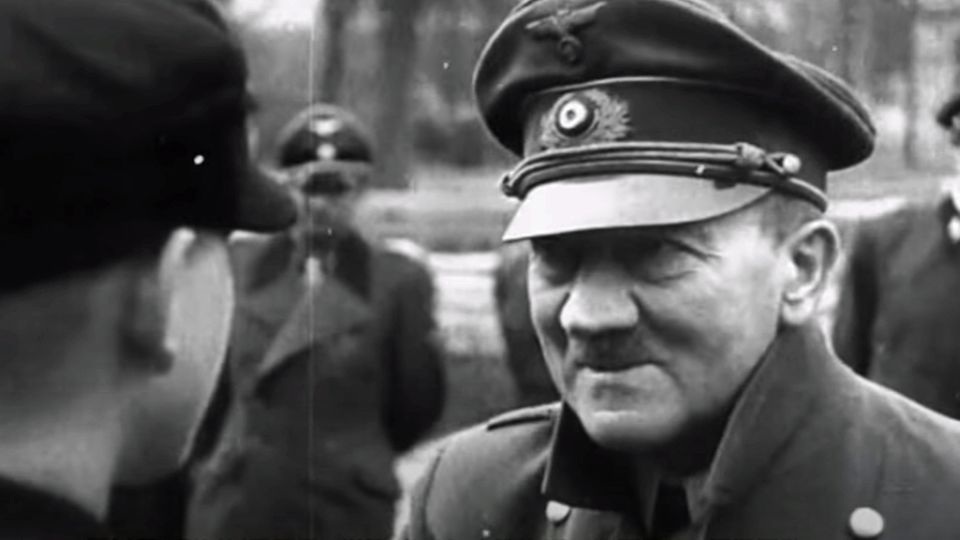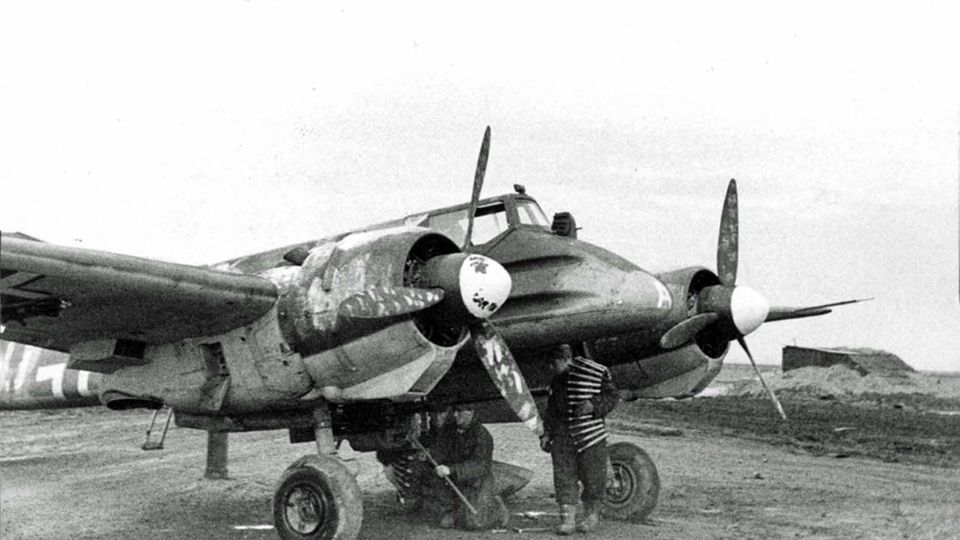Second World War
Dönitz – the absurd government of the last leader
Karl Dönitz (centre), General Alfred Jodl and Minister of Armaments Albert Speer after their arrest.
© akg-images / Picture Alliance
After the death of Hitler, Grand Admiral Dönitz formed a last Reich government. The ghostly event still reigned over a mini-district after the surrender. For for a time Churchill had big plans for the last leader.
On April 30, 1945, Adolf Hitler took his own life. Before that, he changed his succession plan. Herman Goering, head of the Luftwaffe and Hitler’s comrade-in-arms from the beginning of the party, was arrested at the Berghof and stripped of all offices. In his underground hiding place, the Fuhrer had been told that Göring wanted to make a separate peace with the Western Allies, bypassing him.
The second most powerful man in the empire, Heinrich Himmler, dropped out for similar reasons. Towards the end of the war, Himmler, who was primarily responsible for the Holocaust and numerous other war crimes, lived in the absurd illusion that the United States and Great Britain would want to rule post-war Germany with him of all people.
dominion in the north
So in his political will, which he wrote shortly before his suicide, Hitler designated Karl Dönitz as his successor. Since 1943 the Grand Admiral was Commander-in-Chief of the fleet. From Hitler’s point of view, Dönitz’s unbreakable loyalty spoke for him. In the final years of the war, Dönitz attracted attention with his fanatical will to continue the long-lost submarine war by any means necessary. But what spoke in favor of Dönitz above all was that he was staying in the largest part of the territory still controlled by the Reich, because Schleswig-Holstein, Denmark and Norway had not yet been liberated by the Allies.
Legally, Hitler’s testamentary provisions were more than dubious, but after the resignation of Goebbels’ interim cabinet, the Dönitz government came into office on May 2, 1945. And it remained so even after the unconditional surrender on May 8th. It was not until May 23 that the Allies broke up the spooky event and arrested the members of the Reich government.
Bizarre projects of the pseudo-government
Numerous anecdotes have been handed down about the work of the last Reich government in its refuge in the Mürwik Naval Academy near Flensburg, which cast doubt on the reality of those involved. There they pondered the reconstruction of the country, the need for a new secret police to succeed the dreaded SD and were at a loss as to what to do with the Hitler salute when Hitler was already dead. While the cabinet under Hitler practically never met, regular meetings were now held. In doing so, the government dealt with issues as if there were peace, completely ignoring the fact that its sphere of influence continued to shrink. In the end, the “Reich” was just a five-kilometer strip along the Flensburg Fjord.
However, these oddities should not obscure Dönitz’s actual political goal. Hitler had commissioned him to “continue the war by all means”. But Dönitz knew that the war was lost and, unlike Hitler, he had no interest in senseless resistance just for the sake of resistance. His goal was to achieve a separate armistice, if not peace, with the Western Allies. But he wanted to continue fighting in the East.
Any kind of victory against the Red Army was out of the question; sustained defense of the last troops was supposed to enable civilians to flee to the West and Wehrmacht units that were flooding back to be taken prisoner in the West. After the first cabinet meeting, his adjutant noted: “The main goal of the government must be to save as many German people as possible from annihilation at the hands of Bolshevism.”
Escape from the East
In part, these goals have also been achieved. The parts of the Wehrmacht in the West capitulated in quick succession. The cities of Hamburg and Lübeck were surrendered without a fight, and millions of people swept into Western Allied-controlled territory in the days of the Doenitz government. But one must not forget that Dönitz knew how to erect his own monument with his memoirs (“10 Years and 20 Days”, 1958). He worked adeptly with the anti-Communist sentiment of the post-war era. Of the obvious entanglements, those things that Dönitz could not deny were openly admitted.
In addition, he, who ruthlessly burned his submarines, now praised the bravery of German soldiers and sailors and, like other leading military figures, captured the spirit of the late 1950s. In a bold distortion of facts, Donitz presented himself as a mere military man who, so to speak, had only the misfortune of serving under Hitler.
In today’s research, the number of “rescued” is just as controversial as the sense of the whole evacuation action. In the 1960s, the public judged that escaping the Reds was worth every sacrifice. The propaganda slogan “Better dead than red” made its way seamlessly from World War II to the Cold War. The continuation of the war cost more victims. And capture by the Red Army does not necessarily mean death and rape. After the riots that took place in Berlin, the Soviet leadership took draconian measures to stop their soldiers from attacking them. Special troops maintained order in a Stalinist manner. The eyewitness and publicist Erich Kuby noted at the time how rapists were dragged to death behind trucks to deter the troops who assembled.
Pledge in poker for the post-war order
After the capitulation on May 8th, the days of this government were actually over. Only an adventurous calculation by British Prime Minister Winston Churchill kept them alive. Churchill was convinced that there would be a confrontation with the USSR. “We slaughtered the wrong pig,” he later said in reference to Hitler and Stalin. International law prohibited the forced recruitment of German soldiers by the occupying powers. But with an incumbent German government, the western powers would have had legal access to German troops. The captured soldiers could also have been used again as allies. So the last leader with a few bureaucrats ruled over the “special area Mürwik” around the naval school. Stubbornly, Dönitz continued to hang pictures of Hitler and hoist the Reich flag.
These considerations do not go unnoticed by the Soviets. They demanded the government move to Berlin, which they controlled. When that didn’t happen, they applied so much pressure that the Americans imprisoned the government. Dönitz was still wearing his golden baton when he was arrested.
He was later charged as a major war criminal in Nuremberg and sentenced to ten years in prison.
Sources: guardians, SHZ
Also read:
Hitler’s planes could have won the air war over England – says mathematics
How Hitler Youth Wilhelm Hübner experienced the last days of the war
The can opener – the Hs 129 was to become the strongest tank buster of the war
Why the German tanks failed to turn the tide in the Battle of Normandy






